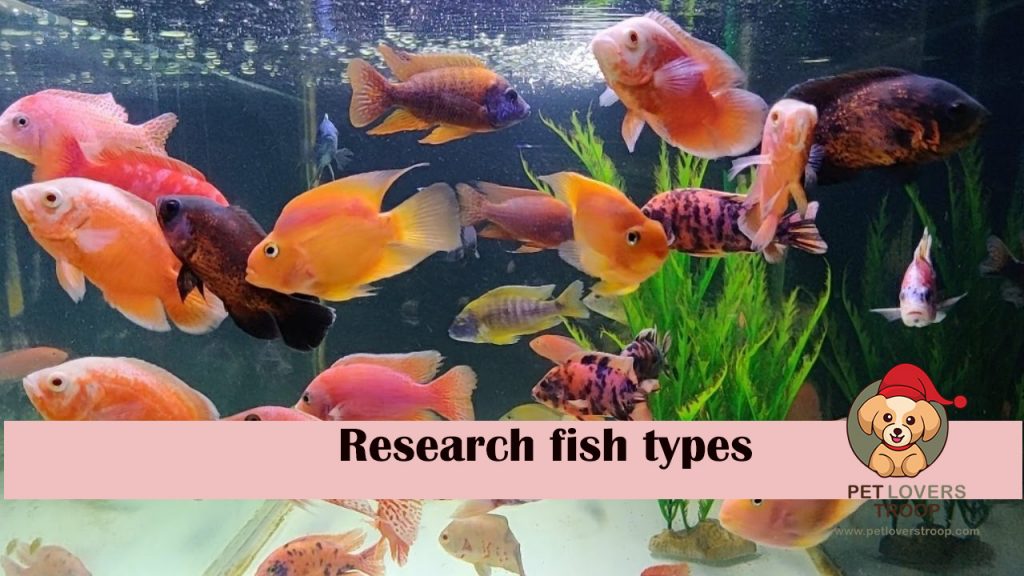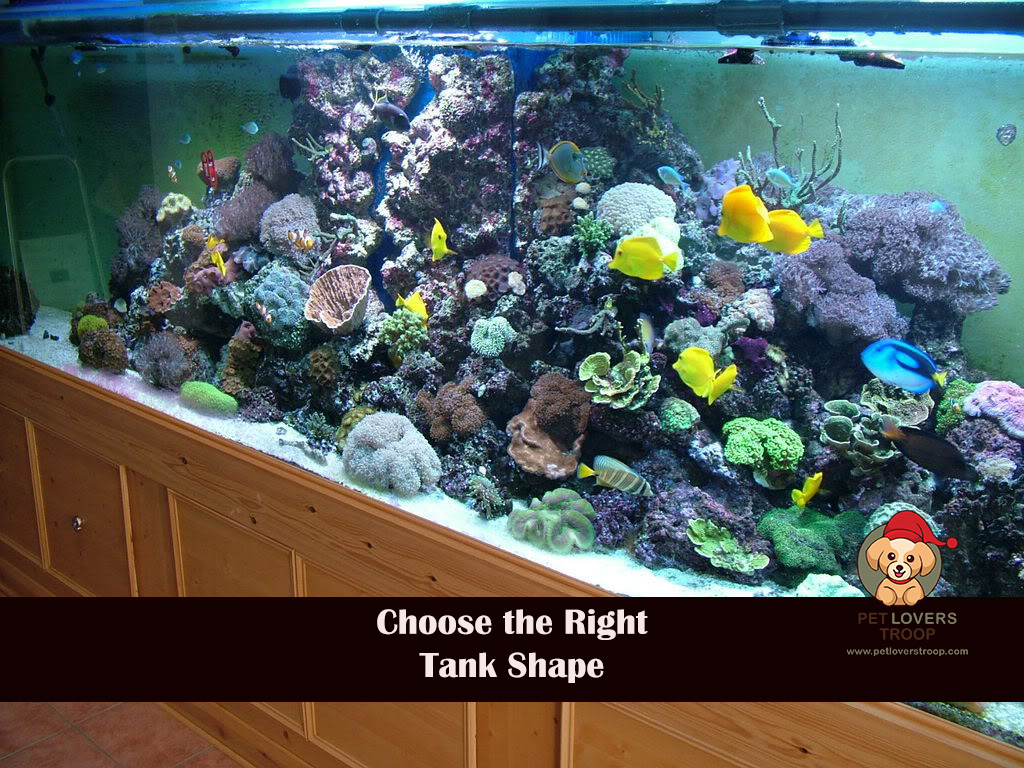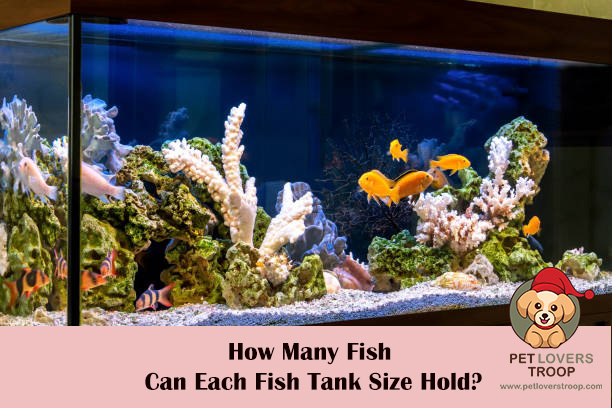Are you planning to buy a new fish tank? Whether you’re new to the fish aquarium world or looking to upgrade your existing setup, selecting the right fish tank is important for the well-being of your aquatic pets. This comprehensive guide offers ten valuable tips to help you choose the perfect fish tank in terms of size and type.
Read more: How to meet the Healthy Dietary Needs of Different Fish Breeds
From small fish aquariums to wide and large options, we’ll cover everything you need to know. Additionally, we’ll explore types of aquarium fishes, fish sizes, and types of fish tanks and where to place an aquarium. Let’s dive in!
Tip 1: Finding the Perfect Spot: Where to Place the Aquarium in Living Room

The living room is often the focal point of a home, and placing your fish aquarium in this space allows you to showcase its beauty while creating a tranquil and captivating atmosphere. Consider the following tips when finding the perfect spot for your fish tank in the living room:
Stability: Ensure the chosen location can support the weight of the fish tank and its contents. Large fish tanks can be quite heavy, so it’s important to place them on a sturdy surface that can handle the load.
Lighting: Avoid placing the fish tank in direct sunlight, as it can lead to excessive algae growth and temperature fluctuations. Natural light can also cause stress to some fish species. Instead, opt for indirect or artificial lighting to provide adequate brightness for your fish aquarium.
Read more: Dirty fish tank: How to maintain your fish tank’s hygiene and health?
Accessibility: Choose a location that allows easy access for maintenance tasks such as water changes, filter cleaning, and feeding. It’s essential to have enough space around the fish tank to comfortably perform these routine activities.
Viewing Pleasure: Consider the viewing angles from different seating areas in your living room. You want to ensure your aquarium fishes are visible and enjoyable from multiple perspectives, allowing you and your guests to fully appreciate the beauty of your aquatic world.
Aesthetics: Integrate the fish tank into your living room’s overall design and decor. Consider the color scheme, furniture placement, and surrounding elements to create a harmonious and visually appealing setup.
By carefully considering these factors, you can find the perfect spot for your fish aquarium in the living room, transforming it into a stunning highlight that enhances the overall ambiance of the space.
Tip 2: Assess Your Available Space for the Fish Aquarium
When considering a fish tank purchase, it’s important to assess your available space. Take measurements of the area where you plan to place the fish aquarium, considering any furniture or electrical outlets that might affect the placement.
Understanding your available space allows you to determine the suitable fish tank size and plan accordingly. Remember to leave some extra space around the tank for maintenance, equipment, and aesthetic purposes. Taking accurate measurements from the beginning will help you choose a tank that fits well within your designated space.
Read more: Understanding Gastric Stasis in rabbits. How to treat a sick rabbit at home?
Consider wide fish tanks if you have a wider space available and wish to create a captivating focal point. These tanks have a greater width-to-height ratio, providing a panoramic view of your underwater world. Wide fish tanks, often referred to as “low-boys” or “panorama tanks,” offer a striking perspective and allow for creative aquascaping options.
The wider surface area also allows for better gas exchange, contributing to healthy oxygen levels in the water. Wide fish tanks are especially suitable for showcasing aquatic plants and creating lush underwater landscapes. However, it’s important to consider the specific needs of the fish species you plan to keep and ensure the tank size and water parameters suit their well-being.
If you have ample space and a desire to house a variety of fish species or create a more naturalistic environment, a large fish tank may be the ideal choice. Large fish tanks, generally starting from 30 gallons and above, offer significant advantages in terms of stability, water parameters, andample swimming space for your aquarium fishes. They allow for more diverse stocking options, including larger fish sizes that require more room to thrive.
Additionally, large tanks also offer greater flexibility in aquascaping, allowing you to create intricate underwater landscapes, incorporate driftwood and rocks, and even introduce natural hiding spots for your fish. However, it’s important to note that larger tanks require more substantial filtration systems, and maintaining stable water conditions becomes increasingly crucial as tank size increases.
Remember regular monitoring of water parameters, routine maintenance, and investing in appropriate filtration and heating systems are essential for the success of a large fish tank setup.
Tip 3: Determine Your Level of Commitment
Owning an aquarium comes with a certain level of commitment and responsibility, as the well-being of the fish depends on your care. Considering the time and effort you are willing to invest in maintaining the aquarium is crucial. Larger fish tanks generally require more attention and maintenance compared to smaller ones. It is important to be honest with yourself about your level of commitment to ensure that you choose a tank size that aligns with your lifestyle.
If you are new to the aquarium hobby, starting with a small fish tank can be a wise decision. It allows you to gradually immerse yourself in the aquarium world, learn along the way, and gain experience before venturing into a larger fish aquarium in the long run. This approach will help you establish a solid foundation and ensure a successful and enjoyable aquarium journey.
Tip 4: Research Fish Types
Different fish species have specific requirements in terms of swimming space, territorial needs, and social behaviour. Moreover, different fish sizes also contribute to the type of fish aquarium suitable. Considering the fish types, you plan to keep is crucial when selecting the appropriate tank size and shape. Here are some key considerations related to fish types:
Adult Fish Size: Research and understand the maximum adult fish size you wish to keep. Some fish can grow quite large and require spacious tanks to accommodate their size. Providing adequate space for the fish to swim and develop is essential for their health and well-being.

Swimming Habits: Take into account the swimming habits of the fish species you intend to keep. Active swimmers require tanks with ample open space, while species that prefer hiding spots and territories may benefit from tanks with plenty of nooks, crannies, and vertical space.
Read more: The Right Tricks and Hacks to Deal with Cat Hairballs
Compatibility and Aggression: Understand different fish species’ compatibility and aggression levels to create a harmonious environment for your aquarium fishes. Some species may be more territorial or aggressive, requiring additional space and suitable tank setups to reduce conflicts.
Schooling Fish: If you plan to keep schooling fish, provide an adequate number of individuals to form a proper school. Schooling fish derive security and comfort from being in a group, so ensure that the tank size allows for the recommended minimum number of schooling fish to create a cohesive and healthy school dynamic.
Considering the specific needs and behaviors of the fish species you plan to keep will help you choose a tank size that promotes their well-being.
Tip 5: Research Different Types of Fish Tanks
Once you have identified the fish species you wish to keep, consider the various types of fish aquariums available in the market, each with its own unique features and benefits. Some common types include freshwater aquariums, saltwater aquariums, reef tanks, and planted tanks. Researching these different types will help you make an informed decision based on your preferences, budget, and the style of aquatic environment you wish to create while also accounting for the specific needs of the aquarium fishes you want to keep.

Tip 6: How Many Fish Can Each Fish Tank Size Hold?
While there are general guidelines for the number of fish an aquarium can hold, it is important to consider the specific needs of the fish species you plan to keep. Overcrowding can lead to poor water quality, increased stress, and disease. Here are some factors to consider when determining fish capacity based on tank size:
Fish Bioload: Each fish produces waste, primarily in the form of ammonia, which can be toxic if not properly managed. Large fish tanks with greater water volume can accommodate a higher fish bioload, while small fish tanks have limited capacity and are more susceptible to water quality issues caused by excess waste.
Filtration and Water Parameters: The efficiency and capacity of your filtration system play a vital role in maintaining water quality. The filtration system should be capable of handling the waste produced by the aquarium fish. Additionally, consider the specific water parameters required by the fish species you plan to keep.
Compatibility: Different fish species’ compatibility should also be considered when determining fish capacity. Some species may be more aggressive or territorial, requiring additional space to minimize conflicts.
Read more: Epileptic Seizures in dogs: Symptoms, associated risks and how to comfort them
A large fish tank generally provides a more stable environment, effectively dilutes toxins, and allows for better filtration and water circulation. It also offers more swimming space for the aquarium fish, reducing stress and aggression.
To determine the appropriate tank size, consider the adult fish size and the number of fish you plan to keep. As a general guideline, aim for a minimum of 1 gallon of water per inch of fish. However, larger fish or species with more active swimming patterns may require even more space. Remember that overcrowding can lead to poor water quality and stress among the fish.
Research the specific needs and behaviors of the fish species you plan to keep and consult reliable sources, such as reputable aquarium guides or experienced aquarists, to determine the appropriate number of fish your tank can support.

Tip 7: Choose the Right Tank Shape
While the size of the tank is important, the shape can also significantly impact the overall aesthetics and functionality of the aquarium. Here are a few common tank shapes to consider:
Rectangular Tanks: Rectangular tanks are the most popular choice due to their versatility and efficient use of space. They provide ample swimming areas for the aquarium fish and allow for easy installation of equipment and decorations.
Bow-Front Tanks: Bow-front tanks have a curved front panel, providing a panoramic view and a beautiful centerpiece. They can be great for showcasing larger fish or creating a visually appealing display.
Corner Tanks: Corner tanks are designed to fit into the corner of a room, utilizing space that might otherwise go unused. They can be an excellent option for smaller rooms or when you want to maximize space efficiency.
Read more: Fish Tank Sizes & Types: How to Choose the Right Aquarium
Cylinder Tanks: Cylinder tanks have a unique cylindrical shape that offers a 360-degree view of the aquarium. They can be visually striking and create an interesting focal point in a room.
Consider the available space, your desired aesthetic, and the specific needs of the fish species when choosing the tank shape.
Tip 8: Choose the Right Tank Material
Fish tanks are typically made of glass or acrylic. Each material has its advantages and considerations:
Glass: Glass tanks are scratch-resistant, durable, and less likely to discolor over time. They provide excellent clarity and are more affordable compared to acrylic tanks. However, glass tanks can be heavy, limiting the size options, and are more prone to breaking if mishandled or subjected to significant impacts.
Acrylic: Acrylic tanks are lightweight, more impact-resistant, and offer greater design flexibility. They are available in various shapes and sizes, making them suitable for custom installations. Acrylic tanks are also less prone to condensation and offer better insulation. However, they are more prone to scratches and can become hazy over time, if not properly maintained.
Consider your preferences, budget, and specific needs when choosing between glass and acrylic tanks.
Tip 9: Gather Essential Fish Tank Accessories
To ensure the well-being of your aquarium fish and the overall functionality of the fish aquarium, gather the necessary accessories. Here are some essential items to consider:
Filtration System: A reliable filtration system is crucial for maintaining water quality by removing waste, toxins, and impurities. Choose a filter appropriate for the size of your fish tank and the needs of your fish.
Heater: Many fish species have specific water temperature requirements for optimal health. A heater helps maintain a stable and suitable temperature range in the tank.
Lighting: Proper lighting not only enhances the aesthetic appeal of the fish aquarium but also supports the growth of live plants and the well-being of the fish. Choose lighting fixtures that provide the appropriate spectrum and intensity for your specific setup.
Substrate: The type of substrate you choose depends on your desired aesthetic, the specific needs of the fish, and the presence of live plants. Common options include Gravel, sand, or specialized substrates.
Decorations: Decorations such as rocks, driftwood, and artificial plants enhance the visual appeal and provide hiding spots and territories for the aquarium fish. Ensure that the decorations are safe for the fish and do not pose any hazards.
Consider the specific requirements of your fish and seek advice from experienced professionals when selecting the necessary accessories.
Tip 10: Research Maintenance Requirements
Owning a fish aquarium involves regular maintenance to ensure the health and well-being of the fish. Research the maintenance requirements associated with the tank size and the fish species you plan to keep. Some key maintenance tasks include water changes, filter cleaning, monitoring water parameters, and observing fish behavior and health regularly. Understanding the maintenance demands will help you plan accordingly and provide the necessary care for your aquatic pets.
Conclusion
Choosing the right fish aquarium is an exciting activity that requires careful consideration of various factors. By following the ten tips outlined in this comprehensive guide, you can confidently navigate the process and select the perfect size and type of fish tank. From assessing your available space, researching different tank options, and considering the maintenance requirements, these tips provide valuable insights to help you make an informed decision.
Lastly, when in doubt, seek advice from experienced aquarists, reputable aquarium guides, or local fish stores. They can provide valuable insights and guidance specific to your situation. Experienced hobbyists can offer practical tips, share their knowledge, and help you make informed decisions about tank size, aquarium fish selection, and maintenance practices. They can also guide you on where to buy the fish aquarium or how to build a fish tank at home.
Remember to prioritize the well-being of your aquarium fishes and create an environment that promotes their health and happiness. Happy fishkeeping!




